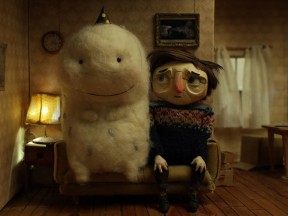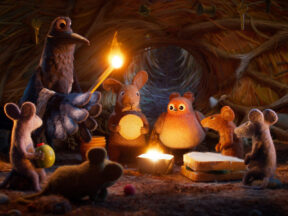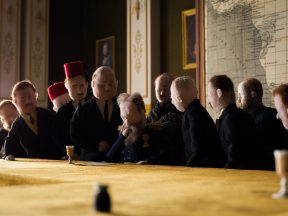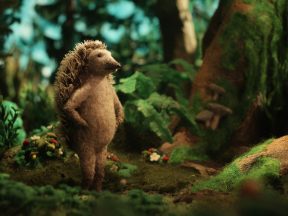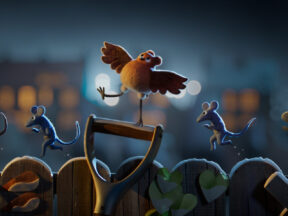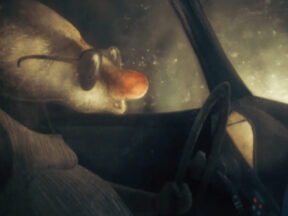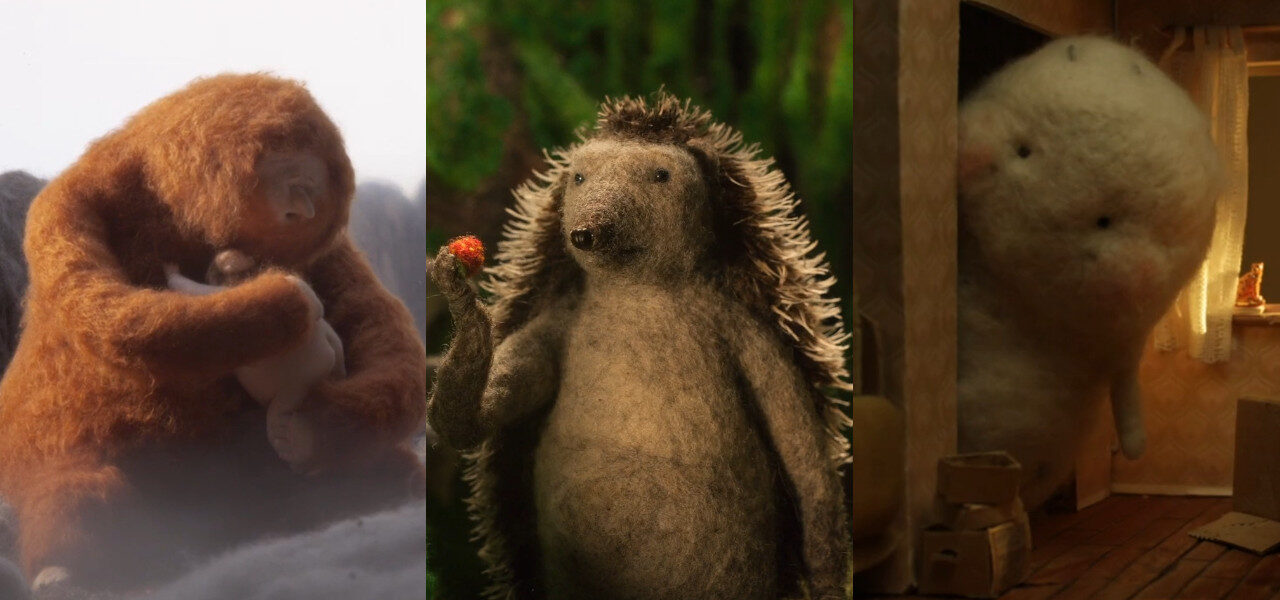
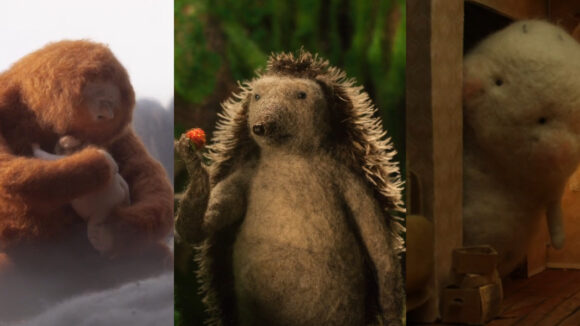
Styles In Animation: Why Felt Feels Right
From reindeer and hedgehogs to robins, Anxiety monsters, and poor ol’ Willy, the use of felt in animation has taken on a whole new energy in recent years. While some point to Emma de Swaef and Marc Roels’ Oh Willy… as a sort of pioneer, the use of felt material in animation was popular long before either the Belgian duo were conceived.
Many animators have dabbled with felt in the past, including Czech animators Hermína Týrlová and Bratislav Pojar (Hey Mister, Let’s Play). Earlier still, Ladislav Starewich used it to animate a cat in The Tale of the Fox. The cult classic Christmas special Rudolph the Red Nosed-Reindeer (Rankin-Bass) used felt puppets that combined wood, felted wool, and wire. Later, the 1980s’ series The Moomins used felt as well.
That said, Oh Willy… seems to have kickstarted a renewed interest in the material. It certainly demonstrated a different texture of felt from previous examples. There’s a loose, rougher quality to the characters that can also be seen in films like The Magnificent Cake, But Milk is Important, and other works.
So, attempting to discover what’s so appealing about working with felt and why so many are doing so now, Cartoon Brew asked a handful of specialist animators for their opinions, good or bad, about the material.
Emma de Swaef (Oh Willy…, The Magnificent Cake, The House)
We use a very cheap mix of wool and acrylic that I can only find in a specific shop in Manchester, in sheets. We press the sheets of wool into a shape like a hatmaker would, as opposed to needle felting it. I discovered it visiting Mackinnon and Saunders while developing Oh Willy… back in 2010. I’ve tried a few different types of felt from different sources but like the exact shade of pink and thickness of this one- though I would prefer it if it was more flexible. So, I stuck with it over the years, even making city trips to Manchester just to go to the otherwise unremarkable store that sells it. After every film we do feel like we’re really hitting the limit though and are considering using different types or textiles. I’m particularly frustrated at how it limits mouth and eyebrow movement, and how it starts fraying around the edges of mouths when pushed too far.
We mainly like how it interacts with light. It allows for a stylisation of the human form, away from the uncanny valley. Because of the texture it’s always obvious that the technique is stop-motion, never looks like 3D. We try to work with the limitations it gives us on the character animation level in writing and ‘decoupage’. I’m also just very comfortable with the material generally. I’ve worked with wool from a very young age, we had sheep when I was young. I probably have my ‘10,000 hours’ with it now, a skill and familiarity that feels like a pity to let go of or deviate from.
Anna Mantzaris (But Milk is Important – co-directed with Eirik Grønmo Bjørnsen, Enough, Good Intentions)
At the moment I’m using felt sheets made from both real and synthetic wool. I do the heads in balsa wood or supersculpy clay and then cover them in the felt sheets. It has changed. For Milk, we used a needle felting technique which we first tried in a needle felting workshop in Tallin. Also, my mom has always done needle felted characters for the kindergarten where she works. Needle felting gives a fluffier look which suited the creature in that film. Later I became inspired by others who used it on human characters as well, such as the creators of Oh Willy… But for that I used felt sheets as it’s a bit more compact and better for making details. I like it because it gives a soft touch to the characters, and it allows me to keep a simple style without the characters feeling stiff or harsh. It sort of humanises them and softens them up, I think. It’s also a quite easy and quick technique, compared to casting things in silicone and resin etc. The only downside is that it’s hard to clean when it gets dirty.
Eva Cvijanović (Hedgehog’s Home)
I used felted wool. Nothing super special. We used some local wool from a Croatian farmer and some nice merino wool for the colors. Wool is warm and fuzzy; it brings those warm fuzzy feelings we want for a film about home. The quote that always came up was that I wanted it to “feel like a warm blanket.” That and the fact that it has beautiful bright colors and a folk-y feel which went well with the story and with the style of the original illustrations. Also technically, wool is lightweight so a great material for animation. Doesn’t weigh the armature down like plasticine for example.
Andrea Love (Tulip, co-directed with Phoebe Wahl, Cooking with Wool series)
I mostly use wool roving for 3-dimensional needle felting, but I incorporate fabric felt in various ways as well. I have a deep obsession with wool roving as it applies to stop motion. It’s lightweight, malleable, has a directional grain, and interesting variations in color and texture. It’s surprisingly good at holding a shape and can execute particle effects like fire, water, and smoke. It can achieve a high level of realism, but it also shines in abstract and surreal settings. I like that it gives people a tactile, visceral reaction- most people find it comforting and nostalgic, but there’s another group of people who feel itchy and uncomfortable and can’t stand it. Many people don’t even know what they are looking at when they watch needle felted animation, so it takes on a bit of a magical feel. I’m surprised needle felting isn’t a more popular mainstream craft, but perhaps it is going in that direction as people learn more about it!
Robin Jensen (Norwegian Association of the Blind and Partially Sighted ‘Help! We have a blind patient’)
The material I used was old stockings. The whole idea of using puppets instead of, let say classic cartoon, cut-out, or even 3D, was because I thought it would emphasize the problems of being blind. It just felt more “real” if the puppets actually existed. The consequences of their action would feel more painful in a way instead of, let’s say, if a drawn character fell down the stairs. I don´t know if that’s true, but that was the idea. The reason for using old stockings was for several reasons, money being one of them. We needed to make the puppets fast and cheap, so this just seemed to be the easiest thing to do. The puppets didn’t even have a professional armature. They are just made with strings, causing a bit of a pain for the animator (Margrethe Danielsen). But she was also the one who made the puppets, so it all worked out fine.
Špela Čadež (Orange is the New Black – Unraveled)
I used felt because it was easy, fast and cheap. We needed 23 puppets in 3 weeks. And somehow felt is warm in contrast to the brutal prison those girls were in. I first thought I’m going to needle felt them, but then I realized it was way better to make them out of fabric felt – it just needed to be real wool. I was lucky to be in Holland at the festival and there was a store with really great wool felt. So I bought all the felt there. In Ljubljana they had only one that was mixed with plastic. Felt fabric can be well formed with steam and the camera loves it. The light has to be soft, and it all looks great.
Dale Hayward (co-director with Sylvie Trouvé) and Daphné Loubot (Puppet Fabrication with Dominique Coté) (A Place for All of Us, Les émerveilleurs)
Loubot: We mostly felted with water but also needle felted. It was merino wool for the video clip and mostly carded wool for the advertisement. Merino is a type of wool from merino sheep and carded is a way to treat the wool. Carded also means felted, in that case it’s kind of “pre-felted.” So, we use merino and bergschaf wool that was carded. Carded wool was faster than felt because a part of the job is already done. Also the Bergschaf fibers are rougher and easy to felt. For A Place for All of Us we wanted a tighter looking wool, less hairy.
Hayward: The project’s main reference was Hedgehog’s Home (thanks Eva!), so felt felt right from the beginning. The wool texture feels like home; warm and friendly. It’s also versatile, it works well as skin, clothes, and objects. Coinciding with the spot, we were also creating a music video for Ingrid St. Pierre, and she also referenced wool characters. So it was very practical from the production standpoint to keep the same crew working. It’s also relatively fast to create a good-looking puppet with felt, so that was important too.
Mikey Please and Dan Ojari (co-directors), Anne King (puppet making creative lead) (Robin Robin)
King: We started by using extra fine merino, which does felt well, but puppet maker Mariela Sartori, whom we hired as a felt expert, had used a different one which she found superior, so we used that. We used Maori from Dying House Gallery (DHG) in Italy. According to the company, Maori is a blend of carded wool from New Zealand. When we started creating this item back in 2007, we wanted a wool that was perfect for needle felting with a nice natural colour that would allow us to create bright colours as well as soft pastel nuances. After numerous tests we came up with this blend that is now one of our iconic products, loved by both beginners and the more experienced. We couldn’t have chosen a more iconic name: Maori. A small tribute to a great nation and to the homeland of these wools! This was imported in big boxes, and we blended the colours we needed ourselves from their range.
Please and Ojari: There’s something in the way that felt absorbs light that was deeply attractive to us. That slight translucence is a quality we’ve loved in our previous films, where the material interacts with the environment and feels that little bit more alive. Previously that transparent material had been plasterzote, and we hadn’t done a huge deal with felt. But on our second pitch to Aardman we brought a handful of Christmas decorations with us to demonstrate the material’s inherent charm and everyone was on board right away. There are lots of parallels with clay, the traditional material of choice at Aardman, in that it’s possible to sculpt and manipulate in a way not possible with silicone or plasterzote. Keeping the puppets malleable allows for heaps of on the floor possibilities where you might want a character to hit an extreme pose. We exploited that freedom a lot with characters like the Cat and some of the huge mouth shapes she had to hit.
Pictured at top: “Oh Willy…,” “Hedgehog’s Home,” “But Milk Is Important”

